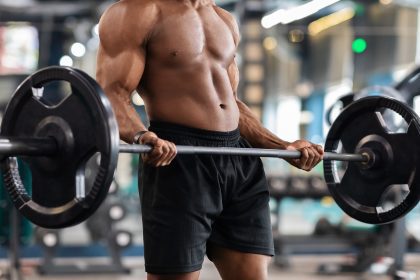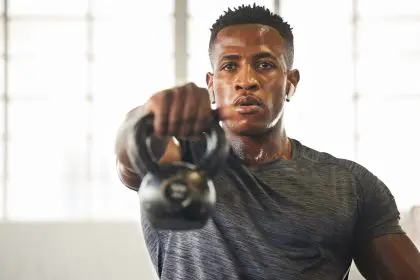The journey from multiple pregnancies to muscle definition represents one of the most challenging physical transformations possible. When a body experiences the dramatic changes of carrying and delivering six children over an eleven-year span, the path back to strength can seem impossibly steep.
Many mothers feel this struggle acutely. The constant cycle of pregnancy weight gain and attempted loss creates a rollercoaster of physical changes that can leave even the most determined individuals feeling defeated. For those who manage to reclaim their strength after multiple pregnancies, the process reveals valuable lessons that can benefit anyone seeking physical transformation.
The motherhood fitness challenge
Between ages 22 and 33, the postpartum body faces extraordinary challenges. Each pregnancy brings unique physical impacts, with later pregnancies often proving more difficult to recover from than earlier ones. Despite efforts to maintain activity during pregnancies through running, road biking, and home workouts, returning to pre-baby strength becomes increasingly elusive with each child.
This reality creates a common scenario where many mothers eventually reach a turning point. After a final pregnancy, the decision to transform both physical and mental health often emerges as a powerful motivator. The initial intimidation of gym environments can feel overwhelming, but beginning with familiar cardio workouts like High-Intensity Interval Training (HIIT) and treadmill exercises provides an accessible entry point.
For many women, the first year of serious fitness commitment reveals unexpected passions. The discovery of weightlifting often occurs through observation – watching strong women in the gym demonstrates possibilities that might never have seemed attainable before. This revelation can transform a casual fitness commitment into a dedicated pursuit of strength.
Learning proper lifting technique
The intimidation factor of weightlifting equipment, particularly the squat rack, represents a significant barrier for many fitness newcomers. Overcoming this fear typically requires seeking help from more experienced gym members to learn proper technique. This vulnerable step – admitting inexperience and asking for guidance – often marks the beginning of a transformative relationship with strength training.
Self-education becomes crucial in this phase. Many successful fitness transformations involve countless hours of YouTube tutorials, careful observation of experienced lifters, and gradual experimentation with heavier weights. The focus shifts to lifting substantial weight, incorporating targeted core workouts, and monitoring nutritional intake.
Despite these dedicated efforts, visible results often remain frustratingly elusive. This plateau period represents perhaps the most challenging psychological barrier in the fitness journey. The temptation to abandon the effort grows strongest precisely when the most important breakthrough waits just ahead.
The protein revelation
The most significant catalyst for physical transformation often comes from an unexpected source – dramatic increases in protein consumption. For many women transitioning from multiple pregnancies to serious strength training, initial protein intake hovers around 80 grams daily. When this intake more than doubles to 180-200 grams per day, the body finally gains the building blocks necessary for substantial muscle development.
This nutritional adjustment, combined with refined training approaches, typically produces the first meaningful visual evidence of transformation. The experience reveals a fundamental truth about fitness – the journey involves far more than exercise alone. Proper nutrition, particularly sufficient protein consumption, proves equally important for achieving visible muscle tone.
While extreme competition-level training proves unsustainable long-term, the process offers valuable insights about the true meaning of health and fitness. The realization emerges that fitness transcends mere appearance, encompassing how the body feels and performs. The combination of adequate protein and consistent heavy lifting creates the foundation for lasting physical strength.
The 3 essential elements of transformation
Among the countless lessons that emerge from the pregnancy-to-muscle journey, three stand out as particularly crucial:
- Patience transforms results The timeline for visible muscle development extends far longer than most beginners anticipate. A minimum commitment of six to seven months of consistent training and nutrition typically precedes any significant visible changes. This extended timeline tests determination but teaches the critical skill of focusing on process rather than immediate outcomes. Those who master this patience ultimately maintain motivation through the inevitable plateaus that challenge every fitness journey.
- Simple goals create sustainable progress The most successful physical transformations begin with manageable commitments rather than overwhelming expectations. Simply establishing a daily gym routine creates the foundation upon which more complex nutritional and training goals can later build. This graduated approach prevents burnout and builds confidence through consistent achievement of attainable objectives.
- Seeking guidance accelerates improvement Embracing beginner status and actively seeking expertise from others dramatically shortens the learning curve. This approach requires vulnerability but yields exponential returns in proper technique development and injury prevention. The willingness to ask questions and accept guidance ultimately builds greater confidence than attempting to project false expertise.
A sustainable fitness routine at 40
By age 40, maintaining muscle and fitness levels after multiple pregnancies requires a strategic approach to training. Splitting workouts by specific muscle groups typically yields optimal results. An effective weekly routine includes:
Monday: Quad-focused leg day featuring hip thrusts, deadlifts, and varied squat techniques to build lower body strength.
Tuesday: Dedicated shoulder training with military presses and lateral raises to develop upper body definition.
Wednesday: Back-strengthening exercises including single-arm rows, assisted pull-ups, and chin-ups to improve posture and upper body pulling power.
Thursday: Targeted arm training incorporating bicep curls and tricep extensions to define the upper arms.
Friday: Hamstring-focused leg day with quad extensions and supplementary core work to complete full lower body development.
This approach prioritizes intensity over volume – typically four exercises performed at higher weights, aiming for six to twelve repetitions per set. This concentrated effort produces more significant results than longer, less focused sessions.
Complementing these structured workouts, daily activity through walking and routine household tasks maintains overall energy expenditure and supports a comprehensive approach to fitness that extends beyond dedicated gym time.
The broader impact of physical transformation
The journey from postpartum challenges to physical strength extends far beyond personal accomplishment. Many women who navigate this path discover a passion for supporting others facing similar struggles. This evolution from student to mentor creates a powerful cycle of empowerment, particularly for mothers who may feel permanently disconnected from their physical strength.
The self-taught path through fitness obstacles provides a uniquely valuable perspective for helping others navigate similar challenges. The combination of lived experience and hard-won knowledge creates an authentic foundation for supporting new fitness journeys.
For those currently in the early stages of post-pregnancy fitness efforts, three key insights offer particular value:
First, recognize that substantial transformations require substantial time. The body responds gradually to consistent training stimulus, particularly after the dramatic changes of pregnancy and childbirth.
Second, understand that nutrition plays an equal role to exercise in creating visible changes. Adequate protein consumption provides the essential building blocks for muscle development.
Third, acknowledge that seeking help accelerates progress far more effectively than struggling in isolation. The fitness community generally responds with enthusiasm to genuine requests for guidance.
The transformation from pregnancy to strength represents one of the most challenging physical journeys possible. Yet the lessons learned along this path provide valuable guidance for anyone seeking meaningful physical change. The ultimate revelation emerges not in the mirror but in the newfound capability of a body that has accomplished remarkable achievements – both in creating new life and in rebuilding strength afterward.
















